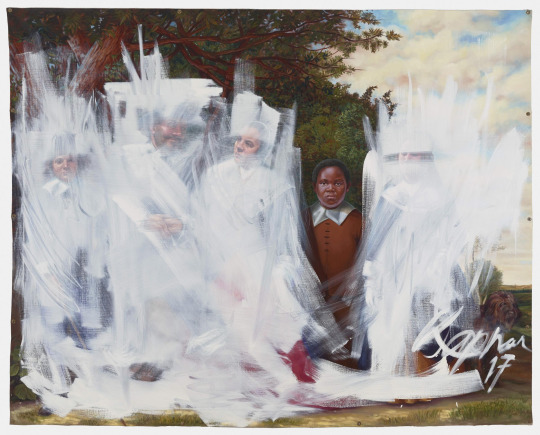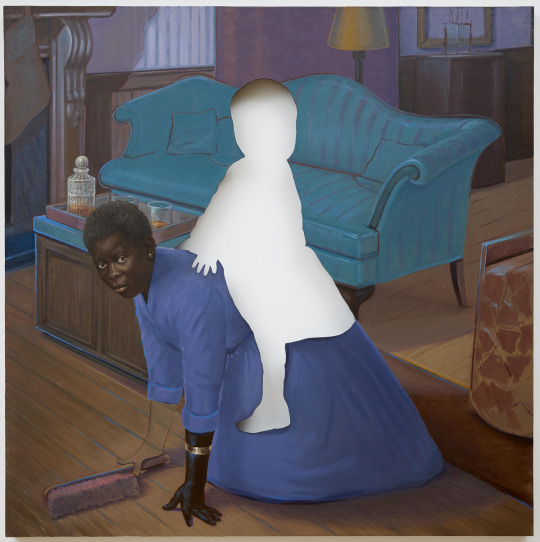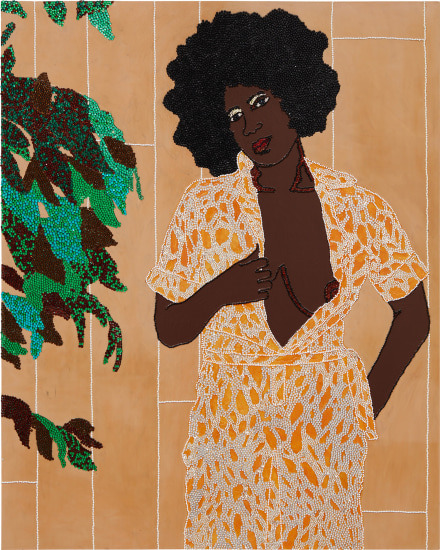Don't wanna be here? Send us removal request.
Text
Networking Reflection
Networking is defined as the act of making contact and exchanging information with other people, groups, and institutions to develop mutually beneficial relationships. There are many forms of networking inside and outside of classes and schools where students and teachers can collectively implement to realize community connection and integration.
0 notes
Text
Collective Intelligence Reflection
Collective intelligence requires us to rethink the nature of expertise and the historic monopoly that schools and institutions of higher learning have claimed over the production and circulation of knowledge. -Henry Jenkins
The traditional teacher-teaching and student-learning structure has shaped and aggravated both ideological oppression and institutional oppression where teachers playing the role of dominant group define the notion of knowledge and forcibly infuse them into students’ mind. Collective intelligence highlights and values the insight and ideas accumulated from diverse sources and numerous individuals opening a gate for the accessibility and transparency of information and message, which further redefines the concept of intelligence and knowledge. Intelligence today is no longer considered as the “a general mental capability”. With the growing technology and social network, intelligence and knowledge are applied interchangeably that the latter one becomes more tangible via open public media space. It is important for us to understand that its capacity for understanding, learning, reasoning, analyzing, and creating is influenced by the social community where we reside in, and it attributes its variability to the emergent property that it doesn’t reside within any individual’s brain it emerges from the collective pool, providing people a broader social community lens on the information for deeper level of understanding.
0 notes
Text
Week 7 Reading Reflection
In higher education, the dominant discipline structure ensures the ability to concentrate resources in specific areas, provides opportunity for a scholarly community to flourish around a particular set of problems/topics and also builds a strong connection between student education and industry. However, the dominant and traditional discipline structure constrains the epistemological ideas that cross/overlap various areas and inhibits the mutual conversation around issues of shared interests. There are four forms of disciplinary structure that fall outside traditional disciplinary. 1 interdisciplinary; 2. crossdisciplinary; 3. multidisciplinary; 4. transdisciplinary.

Interdisciplinary: integrating knowledge and methods from different disciplines, using a real synthesis of approaches.
Crossdisciplinary: viewing one discipline from the perspective of another.
Multidisciplinary: people from different disciplines working together, each drawing on their disciplinary knowledge.
Transdisciplinary: integrating knowledge and methods from different disciplines, using a real synthesis of approaches.
0 notes
Text
Week 7 Reading Reflection
Traditionally, we perceive message to be the message--it’s the content rather than the form. Marshall McLuhan has argued that throughout history what has been communicated has been less important than the particular medium through which people communicate, so he proposed that medium is not simply the carrier of its content, but is embedded in the content forming an indispensable symbiotic relationship--it’s the technology that transfers the message changes us and changes society.
This kinda reminds me the term symbiosis. Similar to biological symbiosis, a long-term interaction between two different organism, content and carrier are the two distinct requisites that constitute the medium but also conjunctively attached one to another. However, carrier and content are not simply the components of medium, they are even the nature of the medium itself. Medium provides the access for message delivery, exchange or dissemination, but also shapes and influences the content is carried, serving as a message that also has social impacts on audiences.
0 notes
Text
Week 2 Reading Reflection
Academic contents are sometimes confined inside students’ textbooks, teachers’ presentations/lectures, and classrooms are missing many opportunities to address issues closely related to students through the media literacy. Rather than pushing the media literacy away from students, teachers need to create access for media literacy in the classroom facilitating the foundation for the skills of critical evaluation and critical thinking. Media literacy opens a diverse landscape where students are able to interpret messages through an open-ended approach, and also empower students’ voices and participations through independent analysis as well as autonomous making. However, it’s challenging to deconstruct the invisibility of media literacy education and programs in today’s classrooms. Some schools lack for the media literacy support due to financial deficiency while some schools apply media literacy for traditional/limited purposes, such as Google information without prudently examining the validity of found information/messages. Therefore the article The Promises, Challenges and Future of Media Literacy proposes five recommendations for making the changes and promoting the development of media literacy in the classroom.
1. Develop a coherent understanding of the media environment (but also familiarize the relationship between students and the media environment to be well-equipped with a comprehensive understanding towards the broad context).
2. Improve cross disciplinary collaboration (adding dimensions on the subject of media literacy to diversify the representation of media literacy as well as foster students a multi-layered critical thinking).
3. Leverage the current media crisis to consolidate stakeholders.
4. Prioritize the creation of a national media literacy evidence base.
5. Develop curricula for addressing action in addition to interpretation (the ultimate goal for media literacy is to develop students’ ability to access, analyse, evaluate, create, and communicate using information in all form inside and outside of the classroom).
0 notes
Text
Week 6 Reading Reflection
Teachers need to think how to introduce/integrate media literacy into the curriculum to meet their teaching objectives but also foster/reinforce students’ critical thinking towards social issues.
With the emergence of “misleading news” on the public social media, both teacher and parents are really cautious about its implementation especially in the classroom. However, despite its “fake and misleading” attributes, students are ideally exposed to the diverse forms of communications and messages as early as the development of rational thinking and critical thinking through creating access and space for open-ended play and self-exploration.
It can be very challenging for teachers to teach technical skills but also achieve the cultivation of critical thinking about the subject matter simultaneously, so the reading 4 Ways to Integrate Media Literacy in the Classroom highlights a four-step approach to realize the teaching philosophy. To sum up the four steps, teachers should first familiarize themselves with students, building up a target profile of teaching objectives and work backward. Second, media literacy doesn’t need to a be separate subject, which can be embedded in different subjects and can be practiced in many different fields to add another dimension to students’ experience, analyze and evaluation. Then teachers need to give students more time and freedom to practice, experiment and innovate the use of new tools, skills and contents, to well prepare them for a more sophisticated and depth conversations. Of course, the last part is to visit back the media literacy profile/objectives teachers set in the beginning of the school year, ensuring lessons are cohesively alined as well as curricula meet each grade level including digital skills and media literacy concepts.
0 notes
Text
Week 5 Reading Reflection
Teaching is beyond just technical proficiency, but to lead students beyond the invisible thinking by transforming/integrating visual representations into their expressions and presentations. Writing or speaking is seen as a standardized norm for cultivating and expressing thoughts/ideas in today’s classroom, so transforming and subverting the dialogue into a visual representation opens an access for a visible thinking process.
0 notes
Text
Week 3-4 Reading Reflection
Many media literacy today are designed for target audiences simply for the purpose of designed purposes. Erasing any bias or discriminations inside of media literacy can be challenging especially with systematically oppressed mentality among the audiences, so teaching and guiding students to deconstruct the stereotyped mindset is the first step to start initiative and critical research and analysis of media literacy in the classroom. Education serves as a political system of maintaining or of modifying the discourses about every changing understandings and approaches towards media literacy in the class, which in the meanwhile is shaped and constructed within the teaching context. Rather than interpreting media messages based on its original designed purposes, students need to decolonizing the traditional methodologies to analyze media messages, but integrate their authentic cultures, beliefs, and values to interpret the hidden curriculum of those messages.
0 notes
Text
The 13 Disability Categories, Defined


0 notes
Text
Titus Kaphar-Transforming Black into a Visible Color

Titus Kaphar, Shifting The Gaze

Titus Kaphar, Space To Forget

Titus Kaphar, The Jerome Project (My Loss)
0 notes
Link
Children's Books


Artist
Mickalene Thomas
https://www.mickalenethomas.com/



Worksheet
http://www.tolerance.org/sites/default/files/general/tt_who_has_hair_book_handout.pdf
0 notes





